Marine Air Ground Task Force
(MAGTF)
March 26, 2011
This year, we celebrated the Centennial of Naval Aviation showcasing U.S. Navy, Marine Corps, Air Force and Army aerial capabilities, both historical and modern. Performances included World War II era vintage War birds along with the amazing power of the Marine Air Ground Task Force (MAGTF) which included helicopters, simulated explosions, fighter jets and fighting Marines. Not to be missed, this year's show will also host a range of civilian aerial performers and numerous static displays of aircraft and equipment.
The Boeing F/A-18E/F Super Hornet is a twin-engine carrier-based multirole fighter aircraft. The F/A-18E single-seat variant and F/A-18F tandem-seat variant are larger and more advanced derivatives of the F/A-18C and D Hornet. The Super Hornet has an internal 20 mm gun and can carry air-to-air missiles and air-to-surface weapons. Additional fuel can be carried with up to five external fuel tanks and the aircraft can be configured as an airborne tanker by adding an external air refueling system.
US$55 million
The Bell AH-1Z Viper[3] is a twin-engine attack helicopter based on the AH-1W SuperCobra, that was developed for the United States Marine Corps
US$31 million
The Bell-Boeing V-22 Osprey is an American multi-mission, military, tiltrotor aircraft with both a vertical takeoff and landing (VTOL), and short takeoff and landing (STOL) capability. It is designed to combine the functionality of a conventional helicopter with the long-range, high-speed cruise performance of a turboprop aircraft.
US$67 million
The year was 1928. The place - 640 acres covered with cactus, brush and desert wildlife, near Yuma. It was that year that Col. Benjamin F. Fly persuaded the federal government to lease the land from Yuma County. Three weeks later, a 20-year lease with an option for an additional 20 years at $1 per year, was signed. Fly Field became a reality.
Aviation was in its infancy, and Fly Field became the center of attention in Yuma. During the summer of 1928, it was used as a stopover point for 25 planes in a New York to Los Angeles air race. It was used sporadically by private aircraft until 1941 when the U.S. government, through the Civil Aeronautics Administration, authorized an expenditure for permanent runways.
When the United States entered World War II, an air base was erected with the astounding speed which characterized the war effort and by early 1943, Yuma Army Air Base began graduating classes of pilots. The base became one of the busiest flying schools in the nation, training pilots of AT-6 single engine trainers, T-17 multi-engine trainers and B-17 Flying Fortresses.
At the end of the war, all flight activity here ceased and the area was partially reclaimed by the desert. During the period of inactivity, it was controlled succesively by the War Assets Administration, the U.S. Corps of Engineers and the Department of the Interior's Bureau of Land Reclaimation, which used it as a headquarters for its irrigation projects.
On July 7, 1951, the Air Force reactivated the base, and the 4750th Air Base Squadron resumed training as part of the Western Air Defense Forces. The airfeld was named Yuma Air Base, but was renamed Vincent Air Force base in 1956 in memory of Brig. Gen Clinton D. Vincent, a pioneer of bombing techniques, who died in 1955.
The Northrop Grumman EA-6B Prowler is a twin-engine, mid-wing electronic warfare aircraft manufactured by Grumman (now Northrop Grumman) as a modification of the basic A-6 Intruder airframe. The EA-6B has been in service with the U.S. Armed Forces from 1971 through the present. The EA-6B has carried out numerous missions for jamming enemy radar systems, and in gathering radio intelligence on those and other enemy air defense systems. In addition, the EA-6B is capable of carrying and firing anti-radiation missiles (ARM), such as the Shrike missile and the HARM missile. The aircrew of the EA-6B consists of one pilot and three Electronic Countermeasures Officers.
$52 million
The Sikorsky CH-53E Super Stallion is the largest and heaviest helicopter in the United States military. It was developed from the CH-53 Sea Stallion, mainly by adding a third engine. Sailors commonly refer to the Super Stallion as the "Hurricane Maker" because of the downwash the helicopter generates. It was built by Sikorsky Aircraft for the United States Marine Corps. The less common MH-53E Sea Dragon fills the United States Navy's need for long range mine sweeping or Airborne Mine Countermeasures (AMCM) missions, and perform heavy-lift duties for the Navy. The CH-53E/MH-53E are designated "S-80" by Sikorsky.
US$24-36 million
SAR (Search And Rescue)
The Bell UH-1N Twin Huey is a medium military helicopter that first flew in April, 1969.[1] The UH-1N has a fifteen seat configuration, with one pilot and fourteen passengers. In cargo configuration the UH-1N has an internal capacity of 220 ft³ (6.23 m³). An external load of 5,000 lb (2,268 kg) can be carried by the UH-1N. The CUH-1N (later CH-135) Twin Huey was the original version, first ordered by the Canadian Forces.
US$6 million in 1987
The C-12 Huron is the military designation for a series of twin-engine turboprop aircraft based on the Beechcraft Super King Air and Beechcraft 1900. C-12 variants are used by the United States Air Force, United States Army, United States Navy and United States Marine Corps. These aircraft are used for various duties, including embassy support, medical evacuation, as well as passenger and light cargo transport. Some aircraft are modified with surveillance systems for various missions, including the Cefly Lancer, Guardrail and Project Liberty programs.
$6 Million USD
The Mitsubishi A6M Zero was a long range fighter aircraft operated by the Imperial Japanese Navy Air Service (IJNAS) from 1940 to 1945. The A6M was designated as the Mitsubishi Navy Type 0 Carrier Fighter (零式艦上戦闘機, rei-shiki-kanjou-sentouki?), and also designated as the Mitsubishi A6M Rei-sen and Mitsubishi Navy 12-shi Carrier Fighter. The A6M was usually referred to by the Allies as the "Zero", from the 'Navy Type 0 Carrier Fighter' designation. The official Allied reporting name was Zeke.
The BAE Systems Silver Fox UAV is an Unmanned aerial vehicle (UAV) that can conduct autonomous aerial surveillance imaging. The Silver Fox UAV is designed to provide low cost aerial surveillance imaging and carry sensor payload packages weighing up to four pounds. Video images are transmitted from Silver Fox to a ground station for quick reference. One ground station can simultaneously operation ten units
The North American Aviation T-6 Texan was a single-engine advanced trainer aircraft used to train pilots of the United States Army Air Forces, United States Navy, Royal Air Force and other air forces of the British Commonwealth during World War II and into the 1950s. Designed by North American Aviation, the T-6 is known by a variety of designations depending on the model and operating air force. The USAAC designated it as the "AT-6", the US Navy the "SNJ", and British Commonwealth air forces, the Harvard, the name it is best known by outside of the United States. It remains a popular warbird aircraft.
The Bradley Fighting Vehicle is an American fighting vehicle platform manufactured by BAE Systems Land and Armaments, formerly United Defense.
As with other infantry fighting vehicles, the Bradley is designed to transport infantry with armor protection while providing covering fire to suppress enemy troops and armored vehicles. The M2 holds a crew of three: a commander, a gunner and a driver; as well as six fully equipped soldiers. The M3 mainly conducts scout missions and carries two scouts in addition to the regular crew of three.
A Mine Resistant Ambush Protected (MRAP) is a family of armored fighting vehicles designed for the U.S. Army and United States Marine Corps with the goal of surviving IED attacks and ambushes - prompted by US deaths in Iraq
US$500,000 each
From Air Force Base to
Marine Corps Air Station
The Facility was signed over to the Navy Jan. 1, 1959, and nine days later, Col. L.K. Davis became the first commanding office of the newly designated Marine Corps Auxiliary Air Station. On July 20, 1962, the designation was changed to Marine Corps Air Station. From 1962 until 1987, the air station served primarily as a training base for pilots assigned to Marine Corps Crew Readiness Training Group-10 flying the F-4 Phantom, A-4 Skyhawk and AV-8A Harrier.
Since then, the main runway has been extended to 13,300 feet (enough concrete for 37 miles of two-lane highway) and the Tactical Aircrew Combat Training System, has been added. The system is designed to provide realistic air-to-air combat training with electronically simulated weapons firing for all Navy and Marine squadrons.
In 1987, Marine Aircraft Group-13, with Marine Attack Squadrons 211, 214, 311 and 513 replaced MCCRTG-10 as the major tenant command aboard the station. The move also brought Marine Wing Support Squadron-371 to Yuma, joining Marine Air Control Squadron-7 and 2nd Light Antiaircraft on Yuma's ranges.
On September 1, 1994, subsequent to the deactivation of 2nd LAAM Bn., 1st LAAM Bn., was reactivated, consisting of H&S Battery and three firing batteries. 1st LAAM Bn., then merged with MACS-7 on July 11, 1997 resulting in the redisignation of MACS-7 as MACS-(Reinforced).
The Lockheed Martin/Boeing F-22 Raptor is a single-seat, twin-engine fifth-generation supermaneuverable fighter aircraft that uses stealth technology. It was designed primarily as an air superiority fighter and is optimized for air-to-air combat, but has additional capabilities under development that include ground attack, electronic warfare, and signals intelligence roles. Lockheed Martin Aeronautics is the prime contractor and is responsible for the majority of the airframe, weapon systems and final assembly of the F-22. Program partner Boeing Defense, Space & Security provides the wings, aft fuselage, avionics integration, and all of the pilot and maintenance training systems.
The aircraft was variously designated F-22 and F/A-22 during the years prior to formally entering USAF service in December 2005 as the F-22A. Despite a protracted and costly development period, the United States Air Force considers the F-22 a critical component for the future of US tactical air power, and claims that the aircraft is unmatched by any known or projected fighter, while Lockheed Martin claims that the Raptor's combination of stealth, speed, agility, precision and situational awareness, combined with air-to-air and air-to-ground combat capabilities, makes it the best overall fighter in the world today. Air Chief Marshal Angus Houston, Chief of the Australian Defence Force, said in 2004 that the "F-22 will be the most outstanding fighter plane ever built.
US$150 million
The Boeing KC-135 Stratotanker is an aerial refueling military aircraft. It and the Boeing 707 airliner were developed from the Boeing 367-80 prototype. The KC-135 was the US Air Force's first jet powered refueling tanker and replaced the KC-97 Stratotanker. The Stratotanker was initially tasked to refuel strategic bombers, but was used extensively in the Vietnam War and later conflicts such as Desert Storm to extend the range and endurance of Air Force, Navy and Marine tactical fighters and bombers.
Serving with the United States Air Force since 1957, it is one of just six military fixed wing aircraft with over 50 years of continuous service with its original operator. The KC-135 is supplemented by the larger KC-10. Despite increased maintenance costs, studies conclude many of the aircraft could be flown until 2040.
US$39.6 million
The Northrop F-5A/B Freedom Fighter and F-5E/F Tiger II are part of a family of widely used light supersonic fighter aircraft, designed and built by Northrop in the United States, beginning in the 1960s. Hundreds remain in service in air forces around the world in the early 21st Century, and the type has also been the basis for a number of other aircraft.
The F-5 started life as a privately funded light fighter program by Northrop in the 1950s. The first generation F-5A Freedom Fighter entered service in the 1960s. Over 800 were produced through 1972 for U.S. allies during the Cold War. The USAF had no need for a light fighter, but it did specify a requirement for a supersonic trainer and procured about 1,200 of a derivative airframe for this purpose, the T-38 Talon.
US$2.1 million
The improved second-generation F-5E Tiger II was also primarily used by American Cold War allies and, in limited quantities, served in US military aviation as a training and aggressor aircraft; Tiger II production amounted to 1,400 of all versions, with production ending in 1987. Many F-5s continuing in service into the 1990s and 2000s have undergone a wide variety of upgrade programs to keep pace with the changing combat environment. The F-5 was also developed into a dedicated reconnaissance version, the RF-5 Tigereye.
The F-5 served as a starting point for a series of design studies which resulted in the twin-tailed Northrop YF-17 and the F/A-18 series of carrier-based fighters. The F-20 Tigershark was an advanced version of the F-5E that did not find a market. The F-5N/F variants remain in service with the United States Navy and United States Marine Corps as an adversary trainer.
The McDonnell Douglas (now Boeing) AV-8B Harrier II is a family of second-generation vertical/short takeoff and landing or V/STOL ground-attack aircraft of the late 20th century. An American-British development of Britain's Hawker Siddeley Harrier and Sea Harrier, it is primarily used for light attack or multi-role tasks, and is typically operated from small aircraft carriers, large amphibious assault ships and austere forward operating bases.
Although the AV-8B Harrier II shares the designation with the earlier AV-8A/C Harrier, the AV-8B was extensively redesigned from the previous-generation Harrier GR.1A/AV-8A/C by McDonnell Douglas. British Aerospace joined the improved Harrier project in the early 1980s, and it has been managed by Boeing/BAE Systems since the 1990s.
The AV-8B is used by the United States Marine Corps. The British Harrier GR7/GR9 versions were used by the Royal Air Force and Royal Navy. Versions are also used by NATO countries: Spain and Italy. The Harrier family models are referred to commonly as the "Harrier Jump Jet".
US$30–35 million
The Boeing F/A-18E/F Super Hornet is a twin-engine carrier-based multirole fighter aircraft. The F/A-18E single-seat variant and F/A-18F tandem-seat variant are larger and more advanced derivatives of the F/A-18C and D Hornet. The Super Hornet has an internal 20 mm gun and can carry air-to-air missiles and air-to-surface weapons. Additional fuel can be carried with up to five external fuel tanks and the aircraft can be configured as an airborne tanker by adding an external air refueling system.
US$55 million
The Boeing B-17 Flying Fortress was a four-engine heavy bomber aircraft developed in the 1930s for the then-United States Army Air Corps (USAAC). Competing against Douglas and Martin for a contract to build 200 bombers, the Boeing entry outperformed both competitors and more than met the Air Corps' expectations. Although Boeing lost the contract because the prototype crashed, the Air Corps was so impressed with Boeing's design that they ordered 13 more B-17s for further evaluation. From its introduction in 1938, the B-17 Flying Fortress evolved through numerous design advances.
US$238,329
Converted to RB-17G then to DB-17G then to DB-17P. Sold on civilian market as aerial tanker under N9323Z. Now with Confederate Air Force as “Sentimental Journey”, flying under civilian number N9323Z
The North American B-25 Mitchell was an American twin-engined medium bomber manufactured by North American Aviation. It was used by many Allied air forces, in every theater of World War II, as well as many other air forces after the war ended, and saw service across four decades.
The B-25 was named in honor of General Billy Mitchell, a pioneer of U.S. military aviation. The B-25 is the only American military aircraft named after a specific person. By the end of its production, nearly 10,000 B-25s in numerous models had been built. These included a few limited variations, such as the United States Navy's and Marine Corps' PBJ-1 patrol bomber and the United States Army Air Forces' F-10 photo reconnaissance aircraft.
Aircraft Military Serial Number is 335972; civilian registration is N125AZ.
The B-25 was delivered to the 437th Bomb Squadron, 319th Bomb Group, 12th Airforce based at Serraggia, Corsica in the Fall of 1944. Between then and early 1945 the aircraft participated in 15 missions to northern Italy and western Yougoslavia. The B-25 was returned to the US and placed in storage in early 1945 when the 437th BG was transferred to the Pacific theater and re- equipped with Douglas A-26 Invaders. In the 1960s, the aircraft was purchased by Dothan Aviation in Alabama and converted to an agricultural sprayer. Throughout the 1970s the aircraft passed through several owners before being donated to the then Confederate Air Force (now Commemorative Air Force (CAF). The B-25 was assigned by the CAF to the Arizona Wing in Mesa, AZ in 1981. Extensive restoration work was then begun by the Wing's volunteer staff and resulted in a complete teardown of the airframe to remove corrosion and the results of damage from agricultural spray. After 28 years of restoration the aircraft was flown in late May, 2009.
The Lockheed C-130 Hercules is a four-engine turboprop military transport aircraft designed and built originally by Lockheed, now Lockheed Martin. Capable of using unprepared runways for takeoffs and landings, the C-130 was originally designed as a troop, medical evacuation, and cargo transport aircraft. The versatile airframe has found uses in a variety of other roles, including as a gunship (AC-130), for airborne assault, search and rescue, scientific research support, weather reconnaissance, aerial refueling, maritime patrol and aerial firefighting. It is the main tactical airlifter for many military forces worldwide. Over 40 models and variants of the Hercules serve with more than 60 nations
US$62 million
Rod in the straw hat
The A-10 has received many upgrades over the years. Aircraft added the Pave Penny laser receiver pod beginning in 1978. It senses reflected laser radiation from a laser designator on a target for faster and more accurate target identification.[19][20][21] The A-10 began receiving an inertial navigation system in 1980. Later, the Low-Altitude Safety and Targeting Enhancement (LASTE) upgrade provided computerized weapon-aiming equipment, an autopilot, and a ground-collision warning system. The A-10 is now compatible with night vision goggles for low-light operation. In 1999, aircraft began to receive Global Positioning System navigation systems and a new multi-function display. Its LASTE system is being upgraded with the Integrated Flight & Fire Control Computers (IFFCC).
In 2005, the entire A-10 fleet also began receiving the Precision Engagement upgrades that include an improved fire control system (FCS), electronic countermeasures (ECM), and the ability to aim smart bombs. The aircraft that receive this upgrade are redesignated A-10C. The A-10 will receive a service life extension program (SLEP) upgrade with many receiving new wings. A contract to build 242 new A-10 wing sets was awarded to Boeing in June 2007. In July 2010, the USAF issued Raytheon a contract to integrate a Helmet Mounted Integrated Targeting (HMIT) system into A-10Cs.
The Government Accounting Office in 2007 estimated the cost of upgrading, refurbishing, and service life extension plans for the A-10 force to total $2.25 billion through 2013. Modifications to provide precision weapons capability are well underway. The Air Force Material Command's Ogden Air Logistics Center at Hill AFB, Utah completed work on its 100th A-10 precision engagement upgrade in January 2008. The C model upgrades are to be completed in 2011.
The United States Navy Sea, Air and Land (SEAL) Teams, commonly known as Navy SEALs, are the U.S. Navy's principal special operations force and is a part of the Naval Special Warfare Command (NSWC) as well as the maritime component of the United States Special Operations Command (USSOCOM).
The unit's acronym ("SEAL") is derived from their capacity to operate at sea, in the air and on land, but it is their ability to work underwater that separates SEALs from most other military units in the world. The experience gained from operating in the ocean and fresh water battle fields has shaped their identity and, as a result, they are regarded as being amongst the most highly skilled and trained amphibious units in the world[citation needed]. Navy SEALs are trained and have been deployed in a wide variety of missions, including direct action and special reconnaissance operations, unconventional warfare, foreign internal defense, hostage rescue, counter-terrorism, and other missions.
Without exception, all SEALs are male members of either the U.S. Navy or the Coast Guard.
USS Barbel (SS-580) was the lead ship of her class of submarines in the United States Navy. She was the second Navy ship named for the barbel, a cyprinoid fish, commonly called a minnow or carp.
The contract to build Barbel was awarded to Portsmouth Naval Shipyard in Kittery, Maine on 24 August 1955 and her keel was laid down on 18 May 1956. She was launched on 19 July 1958 sponsored by Mrs. Bernard L. Austin, and commissioned on 17 January 1959, with Lieutenant Commander Ord Kimzey, Jr., in command.





















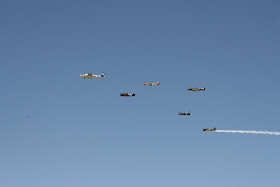




























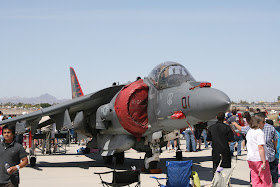












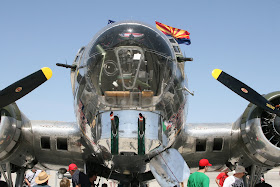



















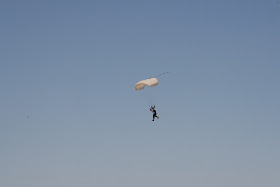




















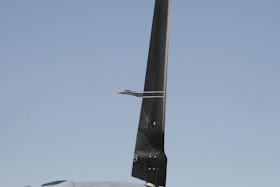











No comments:
Post a Comment